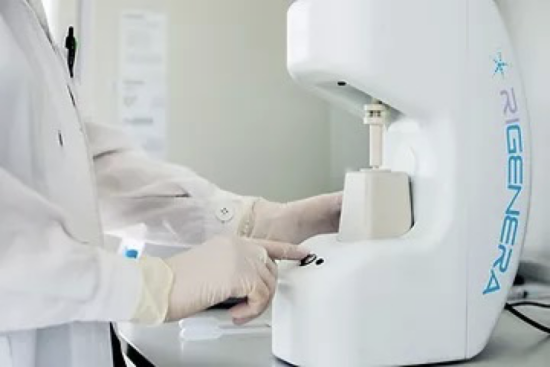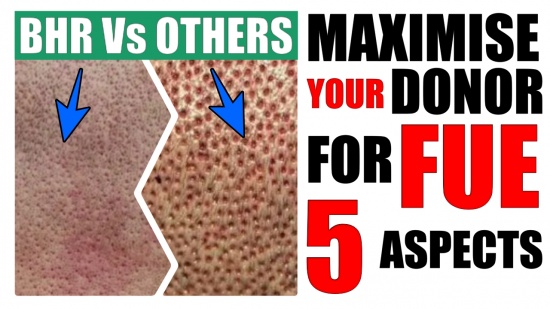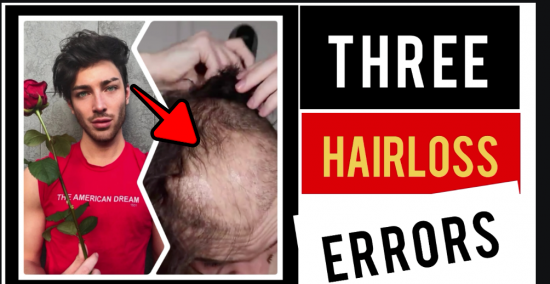Hair loss in the African-Caribbean community is a widespread concern for both men and women. Along with male pattern baldness, traction alopecia is a common issue for females due to tight braiding and extensions amongst other factors.
Afro hair presents unique challenges and therefore requires specific expertise.
The natural shape and design of the hairline can be vastly different than caucasian and asian patients.
BHR Clinic and Dr. Bisanga have established themselves as one of world’s leading clinics in achieving the most impressive results in patients with afro hair.
As opposed to the mostly straight follicle of caucasian and asian patients, typical characteristics associated with afro hair follicles are that the hair tend to be thicker and tightly curled. Such curvature of the hair extends below the scalp. The natural curvature of the follicle can be significant, often to the extent that the follicle when removed is actually in the shape of a letter C, meaning that it is essential to have a surgeon who has knowledge and experience of working with afro hair.
It is very important for the surgeon to perform an accurate and meticulous evaluation of the patient’s donor area in order to avoid possible risk of hypertrophic or keloid scarring and also to avoid any hyperpigmentation reaction such as an exaggerated development of the scalp tissue colour or hypopigmentation, a decrease in the usual tone of the skin surrounding the hair follicle.
A profound understanding of the punching and extraction protocol is essential when FUE is the most appropriate technique, as due to the curvature of the hair, transection presents a higher risk. Another crucial element is that your surgeon must have the appropriate punches and tools to best handle and manipulate afro hair.
For the same reasons that the characteristics of afro hair present unique challenges, when a restoration procedure is performed correctly, these same hair characteristics offer great benefits. The naturally thicker and curlier hair can achieve an impressive illusion of density with a lesser graft count compared to most other hair types.
Different types of alopecia seen in afro or frizzy hair
Androgenetic Alopecia – The most common type secondary to a genetic conversion of large amounts of testosterone into a biologically active testosterone metabolite which results in hair loss.
Traction Alopecia – Caused by the excessive practice of different types of hairstyles such as braids, dreadlocks, ponytails, pigtails, hairpieces, weaves and extensions as well as practices such as brushing and curling. Such methods of pulling and stretching hair mostly in the forehead are the basis of the majority of cases of female alopecia. Alopecia is particularly found in the frontotemporal region.
Central Centrifugal Alopecia – The leading cause of central centrifugal alopecia remains unknown. Still, it is often identified in people with uneven hair length with extreme fragility of hair, resulting in an excessive break at the slightest manipulation. It affects mainly women and is caused by excessive practices of different types of hairstyles, the use of chemical softeners, heat and traction and generally aggressive hair care. Central centrifugal alopecia is usually associated with traction alopecia. The only difference is that in the case of central centrifugal alopecia, hair loss occurs in the form of a small plaque at the level of the vertex, which begins to spread gradually, centrifugally and symmetrically. It should be emphasised that this phenomenon rarely results in an inflammatory reaction of the scalp. It is not uncommon for such individuals to still have some native hair in the area affected by central centrifugal alopecia. Therefore it is strongly advised to undergo medical treatment before considering any surgical interventions.
The diagnosis is established by the doctor using a surgical specimen or biopsy of the inflammatory zone of the scalp. BHR Clinic would like to emphasise here that it is only after treatment of the area affected by scarring alopecia that the surgeon will judge whether the patient is suitableor not to undergo a surgical medical intervention
Alopecia caused by heating comb – Caused mainly by the abuse of the hair straightener, ointments that are derived from petroleum and combs. It is located in the vertex region.
Alopecia Folliculitis and Pseudo-Folliculitis – The result of awkward hair removal or lousy shaving. During these daily hair habits, hair may curve by housing itself on the skin surface, thus causing infections such as follicular papulo-pustules, perifollicular papulo-pustules or granulomas.
Alopecia Seborrheic Dermatitis – It mainly affects people who use products designated to promote healthy hair and scalp such as castor oil, soybean oil, lanolin, lecithin, wheat germ oil or squalene. It is essential to know that the use of these products causes considerable long-term damage to the hair and scalp.
Trichotillomania – A behavioral disorder. This consists of pulling hair, causing alopecia on the delimited area of the scalp or other hairy parts of the body. The causes are often genetic in origin. Treatment is advised before any intervention.
Fibrosing Frontal Alopecia – It is a particular form of LPP (Lichen planar pilar) that affects mainly women after menopause. The leading cause is currently unknown, and to date, there are no established treatments to stop its slow but evolutionary progression. Nevertheless, it should be emphasised that the condition may spontaneously stabilise in the long term. The relapsing nature of the condition requires foresight in the part of the physician. The choice for surgical treatment is evaluated on a case–by–case basis. Fibrosing alopecia is characterised by crown shaped scar–like alopecia affecting the anterior area of the scalp. Essentially gradual hair loss occurring mainly at the border of the frontal and temporal zone.



